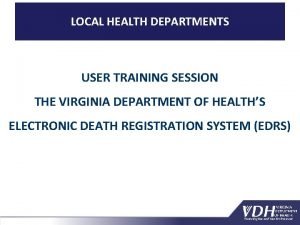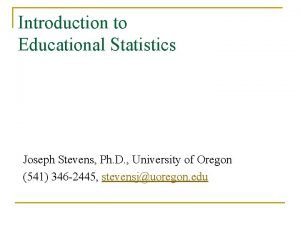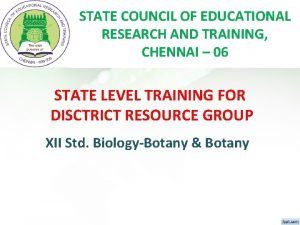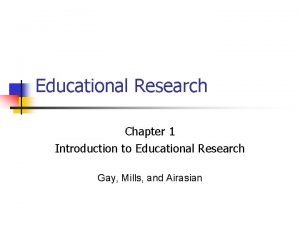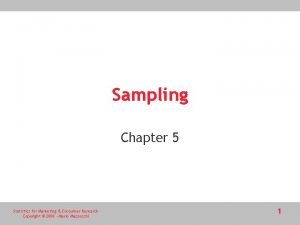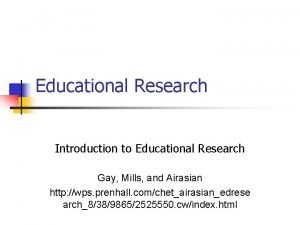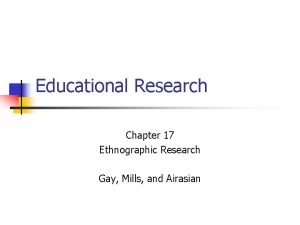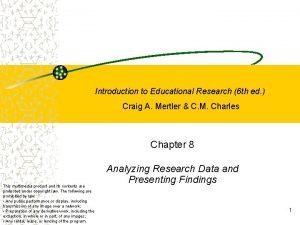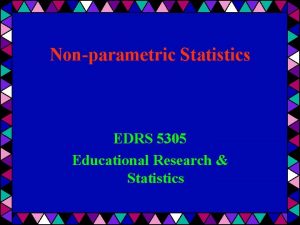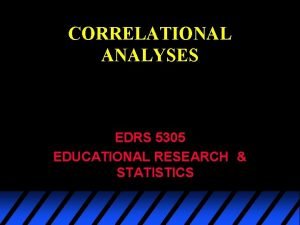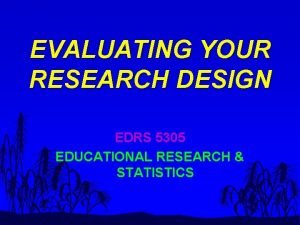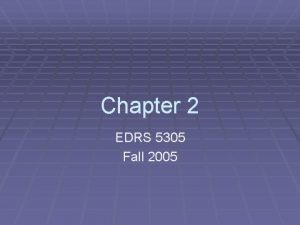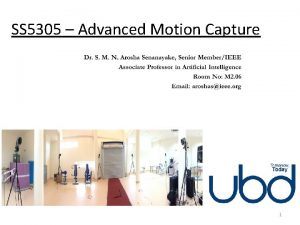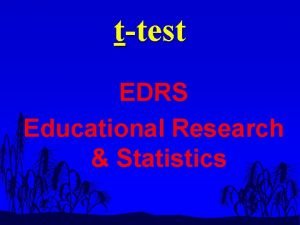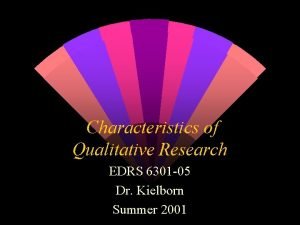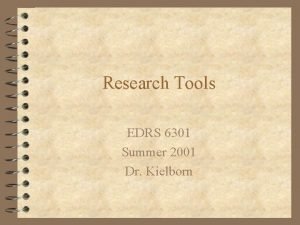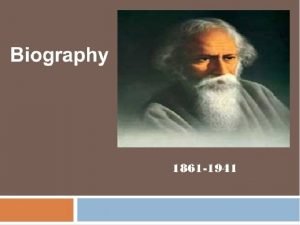Educational Research and Statistics EDRS 5305 Spring 2003












- Slides: 12

Educational Research and Statistics EDRS 5305 Spring 2003

Why study educational research and statistics? o Differences between research and evaluation o Differences between Formal Educational Research, Action Research, and Casual Approach

Why study educational research and statistics? o Only way to make rational choices between alternative practices o Validates educational improvements o Is a stable foundation of effective practices

Who Should do Research? o It is most relevant when it builds upon and involves the people directly affected. o There is external research in the schools o But, local school needs are often neglected. o Need to identify problems, set goals, formulate plans, gather data, analyze outcomes, and reach conclusions.

What is Action-Based Research? o Action Research n Develops new skills or new approaches and solves problems with direct application to the classroom or other applied setting

No Child Left Behind (NCLB) o “These reforms express my deep belief in our public schools and their mission to build the mind and character of every child, from every background, in every part of America. ” - President George W. Bush - January 2001

NCLB o Framework for bipartisan education reform o The “cornerstone of my Administration” o Emphasized his deep belief in our public schools o Concern that “too many of our neediest children are being left behind”

NCLB (cont. ) o Increased Accountability o More Choices for Parents and Students o Greater Flexibility for States, School Districts, and Schools o Reading First

Diagnosing Educational Needs o NCLB requires ten schoolwide components: n n Conduct a comprehensive needs assessment Implement schoolwide reform strategies that are scientifically based Provide instruction by highly qualified staff Provide high quality on-going professional development

Diagnosing Educational Needs o Provide strategies to attract highly qualified teachers to high needs schools o Utilize strategies to increase parental involvement o Ensure smooth transition for students o Include teachers in decisions regarding the use of assessments

Diagnosing Educational Needs o Implement a plan to ensure that all students master the challenging state achievement standards and state academic assessments o Coordinate and integrate federal, state, and local services and programs

 Cast of spring, summer, fall, winter... and spring
Cast of spring, summer, fall, winter... and spring Virginia edrs
Virginia edrs Spring, summer, fall, winter... and spring
Spring, summer, fall, winter... and spring Introduction to educational statistics
Introduction to educational statistics Introduction to statistics what is statistics
Introduction to statistics what is statistics State council of educational research and training
State council of educational research and training Educational research and development
Educational research and development Statistics for marketing and consumer research
Statistics for marketing and consumer research Qualitative research design
Qualitative research design Preference for specific design control for procedural bias
Preference for specific design control for procedural bias Educational research gay
Educational research gay Characteristics of ethnographic research
Characteristics of ethnographic research Introduction to educational research mertler
Introduction to educational research mertler

